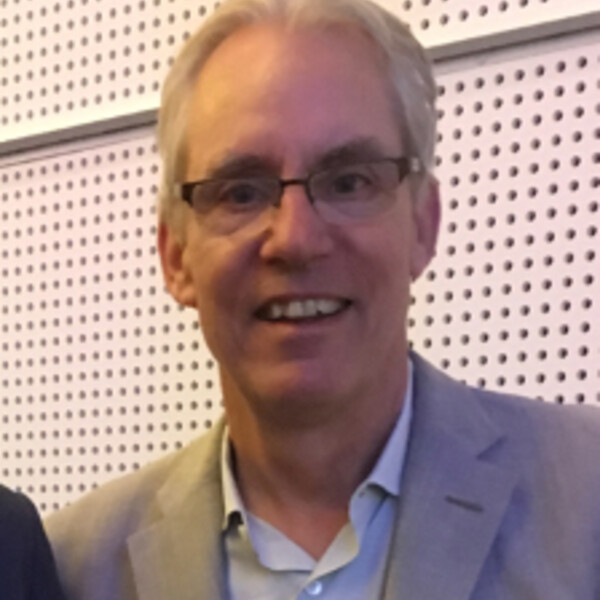F. Stuart Foster
PhD, University of Toronto

At A Glance
- Transducer array and ultrasound imaging systems development
- Ultrasound physics and fundamental interactions in tissues
- Studies of vascular morphology and hemodynamics in the microcirculation - angiogenesis
- Microbubble and nanoparticle contrast agents
- Discovery oriented research in cancer imaging
- Molecular Imaging
- Synthetic Biology
Short Bio
F Stuart Foster is currently a senior scientist at Sunnybrook Research Institute and Professor, Department of Medical Biophysics, University of Toronto. His current research centres on the development of high frequency clinical and preclinical imaging systems, array technology, intravascular imaging, photoacoustics, and molecular imaging. He is the founder and former Chairman of what is now Fujifilm VisualSonics Inc., a company dedicated to preclinical and clinical ultrasound imaging. Dr. Foster co-founded the Mouse Imaging Centre (MICe) now at the Toronto Centre for Phenogenomics. He has previously served on the Board of Directors of the National Cancer Institute of Canada and as Chairman of its Committee on Research (ACOR). He serves on numerous advisory bodies and is an associate editor of Ultrasound in Medicine and Biology.
Awards and Distinctions
Fellow, American Institute of Ultrasound in Medicine (1996)
Fellow, IEEE (2016)
Fellow US National Academy of Inventors (2020)
Fellow Royal Society of Canada (2018)
Fellow, Canadian Academy of Engineering (2018)
Eadie Medal for major contributions to engineering in Canada, (1996)
Queen’s Golden Jubilee Medal, (2002)
Manning Award of Distinction for Canadian Innovation, (2006)
Ontario Premier’s Discovery Award (2008)
Rayleigh Award, IEEE (2010)
Foreign Member, US National Academy of Engineering (2017)
Biomedical Engineering Award, IEEE (2020)
Research Synopsis
Micro-ultrasound. My lab has extended the powerful backscatter methods developed for conventional clinical ultrasound imaging in the 3 - 10 MHz frequency range to much higher frequencies (15 – 200 MHz) thereby enabling tissue microimaging. This technique, called micro-ultrasound or ultrasound biomicroscopy, enables biological structures to be imaged with resolutions ranging from 30 to 100 micrometres over fields of view ranging from 4 to 30 mm. Commercial instrumentation for ocular imaging has proliferated and found wide clinical acceptance as a means of assessing glaucoma and anterior segment tumors. Probes for invasive applications such as catheter based intravascular imaging or needle based ultrasound imaging pose an interesting engineering challenge because the imaging transducer and scanning actuation must fit within a sub-millimeter cavity. Intravascular scanners are designed to provide clinicians with quantitative information regarding the distribution and structure of atherosclerotic plaque in arterial vessels such as the coronary arteries that feed the heart.
Mouse Imaging. We developed micro-ultrasound imaging and phenotyping for mice. The technology developed in our lab became the basis for applications in mouse models of cardiovascular disease, cancer, and many other conditions. The commercial version of this system has been phenomenally successful (>2000 installed units) and is now a standard at most universities, research institutions and drug companies around the world and with total sales exceeding $500 Million.
Photoacoustic imaging. The combination of optical excitation and ultrasound detection provides a new universe of imaging opportunities in which the best attributes of both fields are combined. We developed the first fully integrated photoacoustic micro-ultrasound system. Scanners based on this technology are now located around the world in leading laboratories.
Clinical Systems Development. In collaboration with spin-off partners we have developed clinical applications of micro-ultrasound for ophthalmic imaging, skin imaging, neurosurgical applications, and prostate imaging.
Nanoparticle contrast agents. In collaboration with Mikhail Shapiro at Caltech, we identified the first genetically programmable natural ultrasound contrast agents. GVs are formed by certain species of archaea and bacteria as a means to regulate cellular buoyancy. Small pores in the protein shell allow for the inner gas to be in constant equilibrium with dissolved gas in the surrounding medium. When they interact with ultrasound, they exhibit strong nonlinearities that can be exploited for imaging purposes. These new particles are an important part of our contrast and molecular imaging program. They also have the potential to unlock a “GFP” equivalent for ultrasound imaging.
Dual Frequency Ultrasound. Transducer technology is at the heart of innovation in ultrasound imaging and has been a driver in extending clinical and preclinical applications. The Foster Lab in collaboration with Christine Demore (MBP) and Paul Dayton at the University of North Carolina (UNC) have introduced the first widely separated dual band US for ultrasound contrast angiography and other applications. A first in human clinical trial of this technology is now underway at UNC. The first such devices used simple mechanical scanning of separate low and high frequency elements. We have now developed the worlds first array systems in which both LF (manipulation/therapy) and HF (imaging) beams are transmitted by the same transducer through the same aperture. Widely separating the frequencies of the manipulating beam and the imaging beam offers numerous advantages for imaging and therapy applications.
Entrepreneurship. An important contribution of the Foster lab has been to teach students (and colleagues) the mechanics of real translation which demands an understanding of entrepreneurship and all of the conflicts that go with it. Dr Foster has participated in the development of five Toronto area start-ups which have created opportunities and jobs for hundreds of people.
Selected Publications
